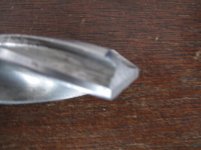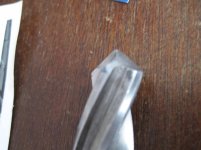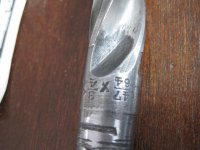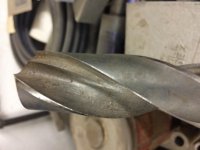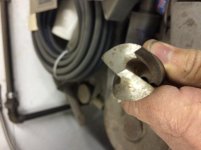Hey,
I have an odd drill bit that I won as part of a lot at an auction. It's a 4-flute but the flutes are not evenly spaced around the diameter. 2 of the flutes are paired relatively close to each other and the other 2 also but on the opposite side of course. It has a W-B-D logo on it with M-S under the logo. I could not find any info for WBD on the Internet. It's marked as 47/64" x 3/4" (that's the oddity to me). It also has these markings A-7 and 197D. It is 3" FL and 6" OAL with a ~0.346" shank.
Any help in identifying it would be appreciated.
Thanks,
Mike
I have an odd drill bit that I won as part of a lot at an auction. It's a 4-flute but the flutes are not evenly spaced around the diameter. 2 of the flutes are paired relatively close to each other and the other 2 also but on the opposite side of course. It has a W-B-D logo on it with M-S under the logo. I could not find any info for WBD on the Internet. It's marked as 47/64" x 3/4" (that's the oddity to me). It also has these markings A-7 and 197D. It is 3" FL and 6" OAL with a ~0.346" shank.
Any help in identifying it would be appreciated.
Thanks,
Mike


